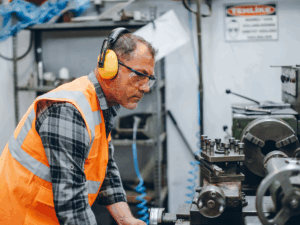November 23, 2022
By Mason Bartleson, VP, process design and operational excellence; Christopher Baldwin, VP specialty operations, temporary housing; Gail Oliver, SVP, sales
The COVID-19 pandemic compelled the insurance industry to move quickly and adopt digital, tech-based solutions that could be creatively applied to existing claims processes. While much of this tech – self-service forms, video chat, etc. – predated the pandemic and was already widely accepted by consumers, one of the primary barriers to automation had been the industry’s tendency to be slow moving when it comes to embracing change.
Over the past two years, as the world has adjusted to living with an epidemic, we’ve seen the policyholder’s self-service experience become a more pressing and relevant initiative. Customers now expect digital solutions, which have become key engagement points for businesses. As a result, our teams have prioritized client satisfaction through tools and technology.
Leading with our caring counts philosophy, it’s important for our customers to know we are available whenever and wherever they need us. However, as great as these tools are, they’re not a substitute for human touch.
One way we differentiate our self-service digital solutions is through in-person support. Though the number of insurance technology companies has expanded dramatically in recent years, without adjusters to engage when needed, they aren’t equipped to offer a smooth transition from digital to human. At Sedgwick, we’re able to seamlessly move from self-service to full-service.
Customers define their digital experience
Our automated decision-making tools are configurable and flexible for the customer. With our self-service forms, we’ve designed questions and put controls in place that allow the customer to decide how far they want the self-service experience to go – and when they want a real person to step in.
For example, perhaps the client is comfortable using the self-service process to submit a claim up to $2,500 but not $10,000. We can put a control in place so that an adjustor will be introduced in the claims process at that loss amount. Shifting to a loss category example like water losses, a client may be comfortable pursuing a self-service claims solution as it relates to pipe losses but not flooding.
One of the keys to our policyholder engagement surrounds our accommodation offering. Within the self-service claims portal, we can link customers to multiple temporary housing options such as hotels and long-term housing through a digital app. This consumable format, which the policyholder can review quickly via their phone, makes the relocation process much easier following a traumatic event, when the last thing that person wants to deal with is deciding where to temporarily live. It’s a far cry from the days of asking the customer if they have a pen handy so they can write down a list of addresses.
Sedgwick’s self-service technology needn’t be limited to policyholders. A common request from clients these days is a notice of loss submission form for their examiners. In the UK, Sedgwick launched digital-first contact technology in which an adjuster’s questions following notification of a loss can be loaded into a web form; an inspection can then be scheduled based on the customer’s answers.
About 75% of Sedgwick customers in the UK are choosing to take advantage of self-service options. The faster we can connect with the customer and assure them of our support, the stronger the relationship.
Potential challenges
Looking ahead to the future of self-service technology, we’re focused on the technology our clients want. They want it embedded into their processes completely in the same way policyholders can access smart.ly for their individual first notice of loss (FNOL) submission. It can be a challenge for us designing this level of seamless integration, but we are coming up with creative ways to make this happen.
Within the loss adjusting space, the industry must continue to find ways to become more efficient; this is the next direction for self-service technology. It’s becoming more challenging to attract new talent into the industry, especially with the technical experience required to handle complex claims, but the industry continues to grow as more claims are submitted. These trends have driven demand for self-service technology as there is an increasing appetite to handle more losses with automation — freeing experienced adjusters to focus on complex claims.
Given the increasing complexities and costs tied to the claims process, we can accept that automation is here to stay. Automating the claims process via self-service technology not only minimizes gains in loss-adjusting expense, but also reduces inventory holding costs because claims can be paid out and closed more quickly.
Our solution is to put tools and tech into the hands of clients and let them create the digital experience they want quickly and at their convenience while backend capabilities determine whether an adjuster needs to get involved. The tools we have now are positioning Sedgwick to be at the forefront of this change in the marketplace.



